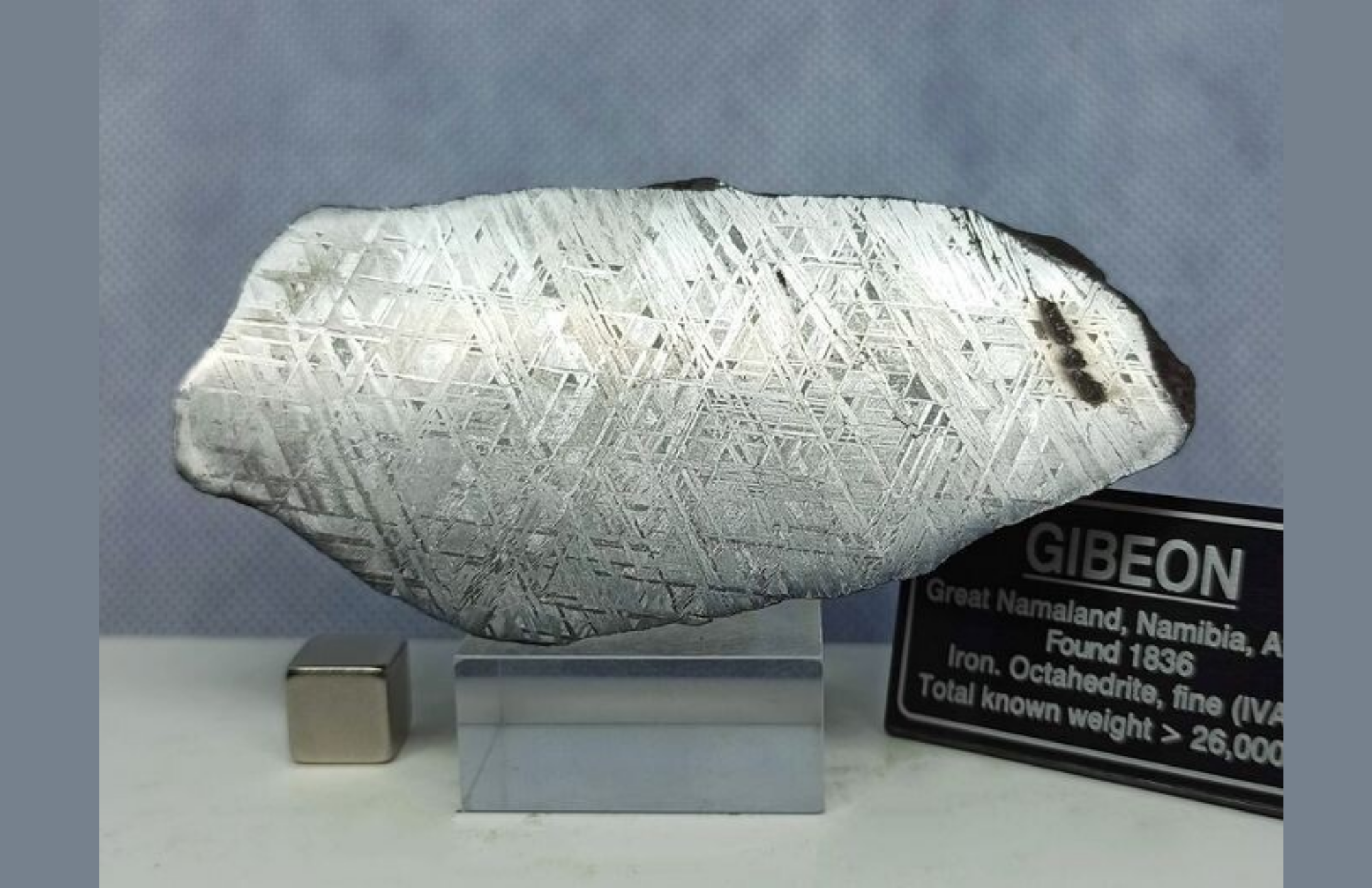Have you ever heard of the old meteoritethat's called the Gibeon meteorite? This is one of the meteorites that have been here on earth for a long time now.
One of the most well-known meteorites in the world is the Gibeon Meteorite.
It is a piece of rock that is 4.5 billion years old! and it fell from space to a field in southern Africa.
Scientists have used the meteorite as an example to show how they use evidence from nature to make claims about the history and geology of Earth.
This article discusses the discovery of the Gibeon Meteorite and its significance in history.
What Is The Gibeon Meteorite?
The Gibeon Meteorite is a piece of an asteroid that hit Earth about 4.5 billion years ago.
In 1836, a farmer named Capt. J.E. Alexander found the Gibeon Meteorite while he was digging in his field with a spade. He took it to the blacksmith in his town, who turned out to be a geologist and mineralogist in his spare time.
The blacksmith realized that this was the first time a meteorite like this had ever been found on Earth. He quickly sold it for £20 to Mr. Thomas Smith Woodward, who owned the local toll house.
In 1839, Mr. Woodward sold it to the British Museum for The Gibeon Meteorite a piece of an asteroid that hit Earth about 4.5 billion years ago.
That's what the other reference stated.
The Gibeon meteorite is an ancient meteorite that was discovered in the present-day country of Namibia, Africa.
What Happened After The Discovery Of The Gibeon Meteorite?
After the discovery, scientists were able to study the Gibeon Meteorite and find out that it was made of a type of rock called Gibeonite that had never been seen before.
The Gibeon meteorite was found in 1836 in the South African village of Gibeon, which is near Johannesburg. It is called this because it fell in this village.
Its Surprising Link To Earth's History
Inside the Gibeon Meteorite, scientists were shocked to find a nearly perfect cube of iron that had been made when Earth was still a molten ball of iron. Scientists were shocked by this finding, and it changed the way they thought about the history of Earth.
One idea is that this meteorite may have come from an asteroid that hit Earth when it was young and helped form the core of our planet.
The Impact Of The Gibeon Meteorite On Earth's Atmosphere
4.5 billion years ago, the Gibeon meteorite hit the Earth's atmosphere. The impact caused a layer of carbon-rich material to form on the ground, which is still there today.
The effect caused the Earth's temperature to rise, which caused ice sheets to melt and plants to die at a rate that had never been seen before. This also caused the amount of oxygen in the air to drop, which led to mass extinctions all over the planet.
In addition to these changes to the environment, the meteorite also made a layer in the air that stopped sunlight from reaching the surface of the Earth.
Gibeon Meteorite Strength
Specimens were permanently deformed without fracture in compression, with an average yield strength of 308 ± 64.9 MPa at 0.2 percent strain, which is consistent with previous studies [6, 22].
Because they are made of iron and nickel, Gibeon meteorite ringsare very hard. It doesn't rust much because of the nickel. The best way to take care of your meteorite ringis to wear it as much as possible in normal situations.
Just like what we've said above, scientists discovered a huge amount of iron in Gibeon.
And yes! this is a type of iron meteorite that is in the chemical group IVA. Gibeon meteorites are made from an iron-nickel alloy that has a lot of cobalt and phosphorus in it.
That's the reason why it is strong and not easy to break.

Gibeon meteorite - 1836 (found)
People Also Ask
Is Gibeon Meteorite Magnetic?
The pretty patterns of crystalsin Gibeon meteorites are called "Widmanstatten patterns," and they are only found in meteorites. WARNING: We want to remind everyone that iron Meteorite jewelryhas iron in it, which is naturally attracted to magnets.
How Can You Tell If A Gibeon Meteorite Is Real?
The first step is to look for a pattern called Widmanstatten. Each piece of meteorite has its own Widmanstatten pattern. Some people do fake it, but they usually don't look very good, and if you compare the pattern to a real meteorite ring, it's easy to see that it's not real.
Why Is The Gibeon Meteoroid Special & What Makes It Different?
The Gibeon Meteorite is a piece of space rock that landed in the South African village of Gibeon. It weighs about 3,000 tons and is thought to be the biggest meteorite ever found. Scientists have been interested in this meteorite because it has a lot of meteoric iron, which is an isotope of iron that is very rare. This isotope is rare on Earth, and scientists have used it to figure out how old rocks and objects from space are. The rock was also used to show how different materials can be made when something from space hits them.
Conclusion
When the Gibeon meteorites hit Earth in the Middle East 4.5 billion years ago, they changed the history of our planet in important ways. Now, it is one of the oldest and most well-known meteorites in history and it is still making an appearance when talking about science and discoveries.

